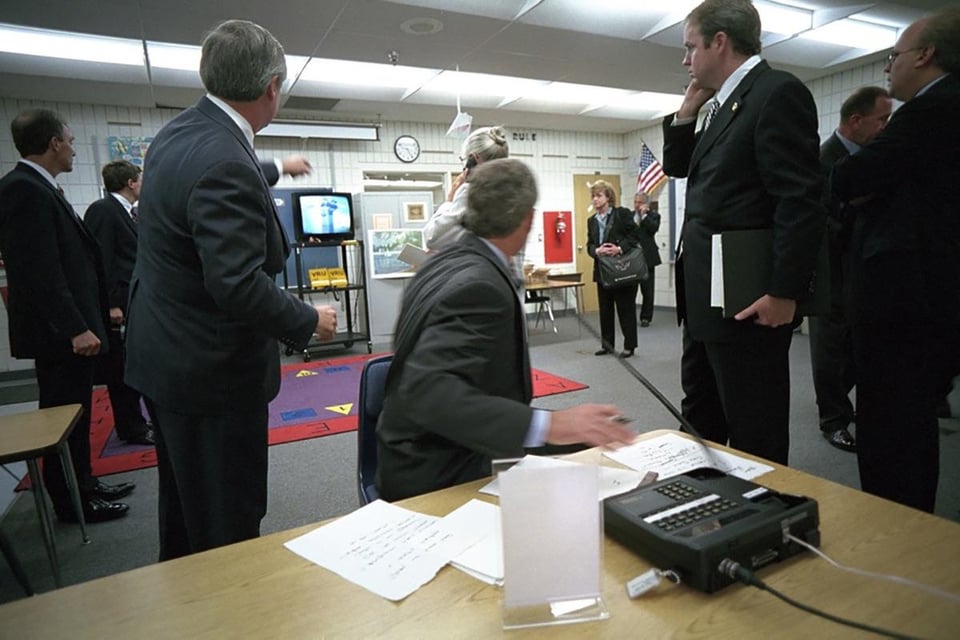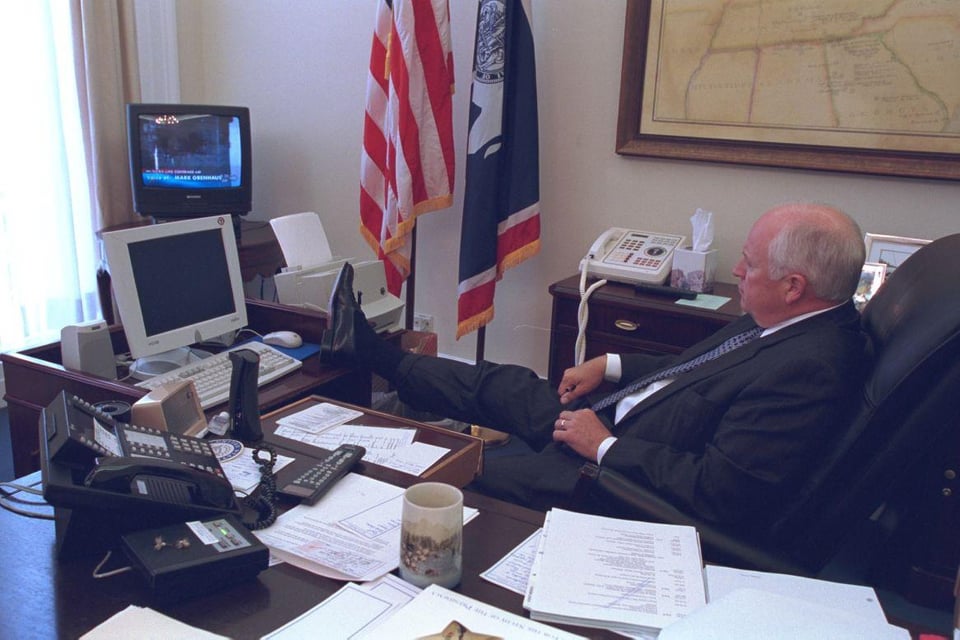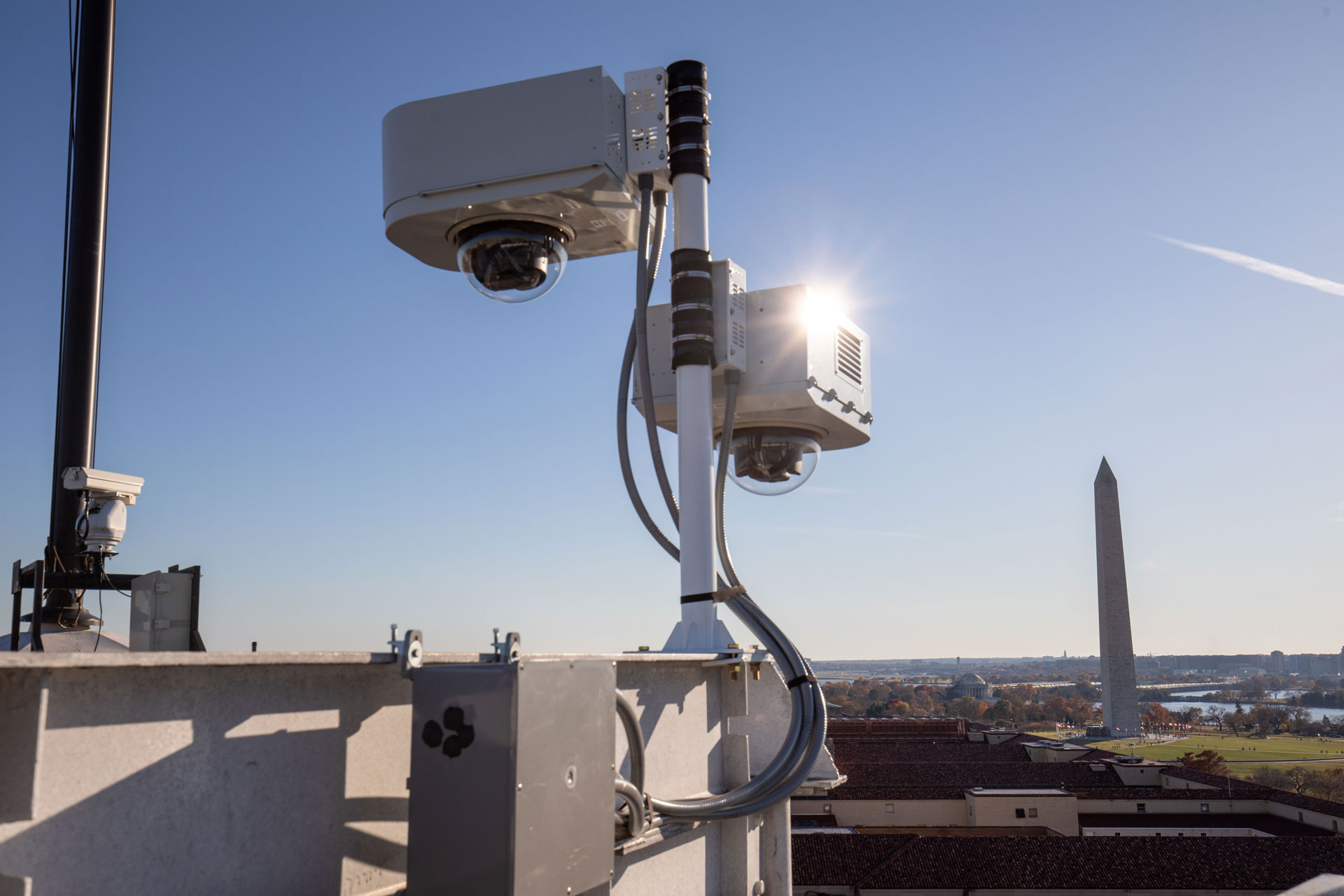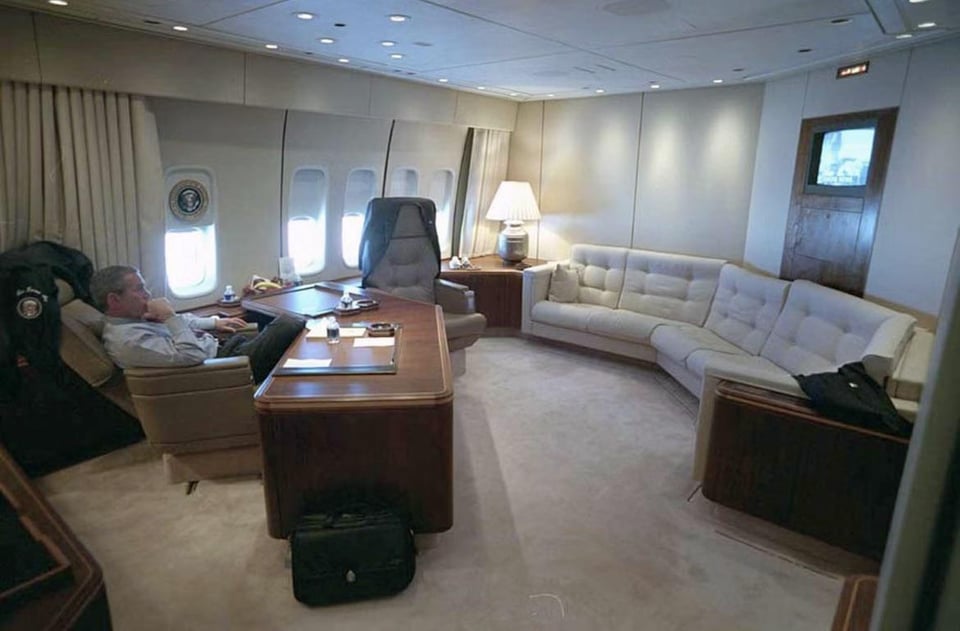News Gathering on September 11
On September 11, the world’s press switched into emergency service. In such moments of national crisis, when society’s every institution clamours for situation awareness, that function is served by the news gathering capacity of the press. CNN’s Atlanta newsroom was perhaps the most operationally impactful intelligence fusion center in operation in the U.S. on that day.
To better understand how breaking news is reported, I watched various September 11th news broadcasts and compared them with footage of the CNN newsroom floor and information in The 9/11 Commission Report.
News gathering served an operational purpose
The news media was the first to inform key leaders of many critical facts on September 11. Leaders of most federal agencies learned about the first crash from CNN, including the FAA administrator and her deputy1. Vice president Cheney learned of the second crash as he saw it live on TV1. The national operations manager of the Air Traffic Control System Command Center (which oversees the 22 Control Centers) learned of the Pentagon crash on television, and it was based on that information that he ordered every plane in the country to land2.
The speed at which the news traveled was pivotal at many points. At 9:19, seconds after CNN reported that the WTC crashes were being investigated by the FBI as hijackings, a United flight dispatcher, Ed Ballinger, by his own initiative, took the only action of the day that came close to foiling an additional hijacking3. He began sending a warning message to United’s 16 transcontinental flights: “Beware any cockpit intrusion— Two a/c [aircraft] hit World Trade Center”. The pilot of Flight 93 asked Ballinger to confirm the message; it was the last communication from Flight 93 - they were hijacked only moments later3.

The first reports came quickly
Flight 11 crashed into WTC 1 at 8:46:404. Only a moment after the explosion, a WNYW reporter, who was in Lower Manhattan reporting on the New York City primary election, called through his microphone to his station’s control room to put him on the broadcast. A few moments later, at 8:48:09, WNYW began broadcasting live pictures of the impact zone and fire from the perspective of their crew on the ground5. The reporter didn’t see the crash, but he passed along chatter he was hearing on the streets.
At 8:49:34, a minute and a half after WNYW, CNN cut into their commercial break with live pictures of the WTC fire from another local affiliate’s rooftop observation camera5. Only 2 minutes and 54 seconds after the impact, there was live video of the fire and reports of a plane crash on national television.
Official word of possible foul play was pivotal
The first step in mounting a security response was realizing that an attack was underway. Although most national leaders immediately believed that the crashes were an attack, news anchors were understandably shy to speculate. Even after the second crash, most news anchors only went as far as to call terrorism a strong possibility.
For the first thirty minutes after the crash, news channels showed rooftop camera footage of the towers and interviewed witnesses on the phone. At 9:10, CNN interviewed a former NTSB spokesman, Ira Furman, who forcefully argued that the crashes must have been deliberate5. Because of his experience at NTSB, he must have felt, which the anchors did not, the personal credibility to speculate.
At 9:18, CNN confirmed an Associated Press report that the FBI was investigating a possible plane hijacking in connection with the WTC crashes5. They heard from a CNN correspondent in Washington about a conversation she had with an FBI official confirming the investigation. This was the first official acknowledgment that the WTC crashes may have been terrorism.
I don’t know whether this news was what prompted Ed Ballinger to begin warning other United flights of hijacking, but I think that it’s likely. In crises, outcomes often hinge on initiative taken by low-level personnel, who are fearful of over-reacting. CNN’s report of the FBI investigation was a pivotal moment of the day.
News of the Pentagon crash was slower to come
A plane crashed into the Pentagon at 9:37:464. At 9:40:38, CNN put the text “reports of fire at Pentagon” on screen5. The first network to show pictures was NBC, from an observation camera, at 9:43:065. Six seconds later, ABC had footage, seemingly shot by someone who had climbed onto a roof5.
That ABC footage, which CNN began showing at 9:44:36, showed smoke billowing in Washington, but the source of the smoke was obscured by the Eisenhower Executive Office Building. This may have contributed to the erroneous report of a fire on the national mall soon after.
The CNN newsroom tape shows the moment when a man, on the phone with CNN’s Pentagon correspondent Chris Plante, says to his colleages “hey guys - fire at the Pentagon”. A little later, there’s a lot of shouting about getting video of the Pentagon fire.
Given that the FAA’s national operations manager made the decision to ground all planes when he saw the Pentagon fire on CNN, the speed with which CNN brought those images could have had operational implications had Flight 93’s attack not been foiled by passengers.

Logistics shaped the information environment
Local news stations have remotely operated pan-tilt-zoom cameras installed on rooftops around their city for traffic, weather, and general monitoring and static shots. Because the September 11th attacks played out at city scale, these cameras proved to be the best way to monitor events. News gathering was limited by the coverage and quality of these cameras.
Because the Pentagon is across the Potomac River, outside the urban core of Washington, there was less observation camera coverage of the Pentagon. This is why ABC, CNN, and their local affiliates had to go with the Executive Office Building shot.
Quality was another issue, as many anchors were at first unsure whether the second explosion was from a plane or whether the first tower had collapsed, when it was obvious to eyewitness observers, because of the quality of the camera images they were watching.
In the CNN newsroom tapes, there are many discussions about logistics of sending video feeds, of reporter travel, who is on what telephone line, which camera feed has what picture, and so on.

Erroneous reporting was minimal
There were many erroneous reports on September 11, and many of them made their way into the CNN newsroom, but few of them made it on air.
In the CNN newsroom tapes, many erroneous reports circulated but didn’t go on air: that a bomb went off at National Airport, that the FBI and Secret Service had offices in WTC, and that the Port Authority closed all bridges and tunnels into NYC. Other erroneous reports were shared on air, such as of a fire at the national mall and State Department.
The tapes show efforts to confirm information. A woman tells her colleagues that CoStar, a real estate data firm, is soon going to email her their information on who leased office space in WTC. A man reads an article from earlier in the year about American Airlines buying more Boeing 767s.
One particularly illuminating moment shows newsroom leaders huddled outside the broadcast control room discussing whether to have the anchor say “CNN had learned” or “sources tell CNN” that one of the hijacked aircraft may have been an American Airlines Boeing 767. Now I know that those two phrases are used by the newsroom to indicate different levels of confidence in the information.
The CNN newsroom reflect the activity in other offices
The scenes captured in the CNN newsroom tapes are similar to scenes that were playing out at United/American Airlines, the FAA, NORAD, etc. As people shout and run in the background, professionals work on the phone or on the computer. In the middle of it, leaders hudle and deliberate.
